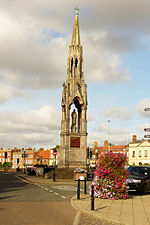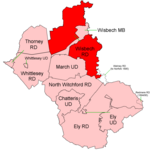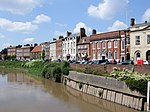Wisbech Grammar School

Wisbech Grammar School is an 11–18 mixed, Church of England, private day school and sixth form in Wisbech, Isle of Ely, Cambridgeshire, England. Founded by the Guild of the Holy Trinity in 1379, it is one of the oldest schools in the country.Chartered by Edward VI in 1549 as a grammar school for boys, for much of its history it offered a largely classical curriculum of Greek, Latin and arithmetic under the governance of the Wisbech Corporation. The school has moved premises several times since its foundation, being based in St Peter's Church, the old guildhall in Hill Street and on South Brink before merging with the Wisbech High School for Girls in 1970 at the present site on North Brink.For much of the 20th century, it was a non-fee paying voluntary-aided school, but following LEA plans to remove this status and merge the Grammar School with two nearby secondary modern schools, the governors decided to become fully independent in 1983. Now a fee-paying day school, pupils aged 4 to 18 attend from the three counties of Cambridgeshire, Norfolk and Lincolnshire. Following the closure of the nearby St Audrey's Convent School, a significant feeder for the senior school, a new junior and infant preparatory school was opened in 1997, now known as Magdalene House.Entry to the senior school at age 11 is based on a competitive examination. Pupils are also admitted at later stages, including sixth form. Pupils generally take nine General Certificate of Secondary Education (GCSE) examinations in Year Eleven (aged 15–16), and they have a choice of three, four or five A-levels in the sixth form. The majority of students go on to higher education following the completion of their A-levels at the end of Year Thirteen (aged 17–18).
Excerpt from the Wikipedia article Wisbech Grammar School (License: CC BY-SA 3.0, Authors, Images).Wisbech Grammar School
North Brink, Fenland District
Geographical coordinates (GPS) Address Phone number Website External links Nearby Places Show on map
Geographical coordinates (GPS)
| Latitude | Longitude |
|---|---|
| N 52.664552 ° | E 0.152735 ° |
Address
Wisbech Grammar School
North Brink 47
PE13 1RH Fenland District
England, United Kingdom
Open on Google Maps









